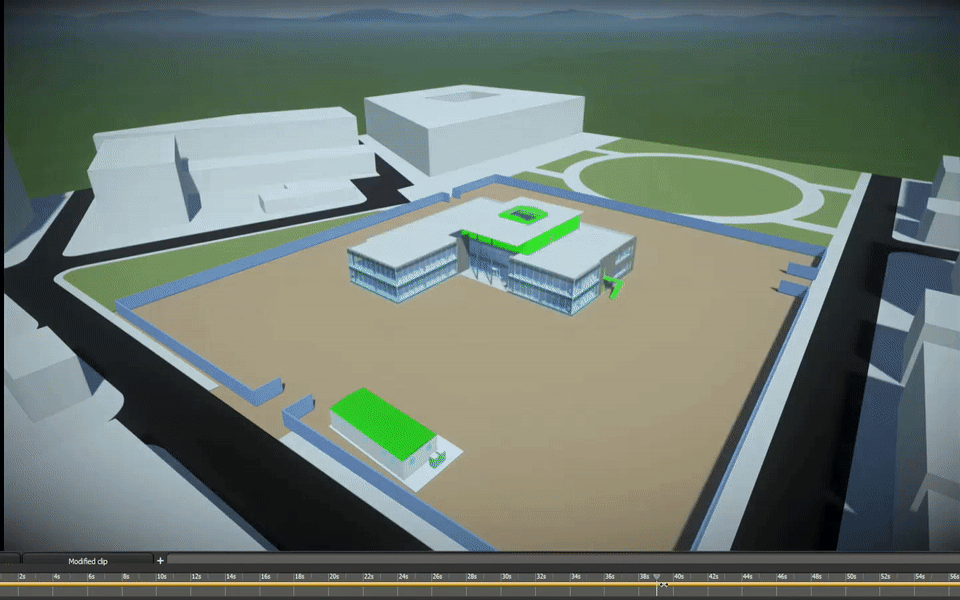BIM vs VDC: What is the difference between them?
Explore the differences between BIM and VDC in construction, highlighting their roles in design, efficiency, and project management for better outcomes.

Building Information Modelling (BIM) and Virtual Design and Construction (VDC) are terms that are often used interchangeably. While they share many similarities, VDC covers a broader scope across the Design, Construction, and Operations of an asset than BIM. This article will help you understand the key differences between the two.
Understanding VDC and BIM
Building Information Modeling (BIM) refers to the process of creating and using digital representations of objects, which can be updated at key stages of a project. Virtual Design and Construction (VDC) focuses on using these BIM models to enhance collaboration and efficiency across the Design, Construction, and Operations of the asset.
Building Information Modeling (BIM) is heavily used in the design phase to enable precise clash detection and design simulations, significantly reducing the risk of costly onsite alterations. It promotes a collaborative environment, allowing stakeholders across the supply chain to offer feedback on the build process and suggest materials, thereby improving the performance and cost-effectiveness of the project.
Most industry players are already familiar with the benefits of BIM in the Design phase. Visualization and simulation allows project stakeholders to mitigate project risks by building twice - once virtually before the materials and manpower are brought onsite to deliver the project. An understanding of the application (and benefits) of Virtual Design and Construction (VDC) during the construction phase is much less widespread.
BIM is the foundation of VDC Workflows - 3D BIM

3D BIM models are generated using a specific subset of BIM software called "Design Authoring Software." These software are equipped with advanced features designed to support the creation of comprehensive BIM models. Such 3D models serve as the essential foundation for any Virtual Design and Construction (VDC) workflow.
Several prominent BIM software solutions are instrumental in facilitating the creation of BIM models, notably Revit, ArchiCAD, and OpenBuildings. Certain BIM applications offer specialized features that simplify the modeling of unique project elements. For instance, Tekla Structures is optimized for creating Fabrication Models, OpenPlant excels in modeling Industrial Plants, and Civil 3D is tailored for modeling Civil Engineering projects.
Time Management and Scheduling - 4D BIM

The integration of time elements into BIM models can be used to create detailed scheduling and timeline visualization. 4D BIM models are a critical element in any VDC workflow during the pre-construction and construction phase to visually orchestrate project timelines, identify potential clashes, and ensure timely delivery.
For complex projects, specialized scheduling software (i.e. Oracle P6, Microsoft Projects) can be used to create the program plan. The schedules are layered on BIM models to create a visual timeline of the project progress. There are tools that have been created that facilitate the integration of BIM models with project schedules. Examples include: [Syncro 4D](https://www.bentley.com/software/synchro/), Navisworks, and BEXEL.
While a spreadsheet and waterfall chart can be readily understood by planning professionals, a multi-million dollar project typically involves many other stakeholders. Everyone can benefit from a visual understanding of the project timeline, especially when it involves the coordination of multiple concurrent activities onsite,
Cost Estimation and Budgeting - 5D BIM
5D BIM embeds cost information into the BIM models for the purpose of dynamic budgeting and cost management. Within the VDC framework, 5D BIM enables stakeholders to perform real-time cost analysis, aiding in financial decision-making throughout the construction process.
Examples of VDC workflows that are enabled by 5D BIM models include: quantity takeoffs from the BIM model, managing payments to subcontractors, and Earned Value Management.
Lifecycle Management - 6D BIM
6D BIM focuses on the sustainable operation and maintenance of facilities, incorporating lifecycle data into the digital models. Maintenance schedules, energy usage data, and sustainability information are meta information that can be directly input in the BIM models.
Asset owners and operators of as-built assets benefit from 6D BIM models as it provides a comprehensive snapshot of the condition of their owned asset. Once an asset has been fully constructed, operational technology (i.e. sensors) can be layered on the BIM model to create an infrastructure digital twin that provides ongoing analytics on the performance of the building.
Case Studies and Applications
There are case studies that demonstrate the effectiveness of BIM & VDC in reducing costs, improving time management, and enhancing overall project quality. From large-scale infrastructure projects to small residential buildings, the integration of BIM and VDC methodologies has proven to be a game-changer.
Jewel Changi Airport: This iconic project showcases the use of BIM in its development, particularly in the complex design and construction of its roof structure and the world's highest indoor artificial waterfall, Rain Vortex. The BIM-based processes facilitated absolute control over the construction process, even as the airport remained operational. The project benefitted from the simulation of construction crane interference with the airport control tower and detailed planning of the maintenance program.
Changi Airport Terminal 4 (T4): Terminal 4 at Changi Airport, known for its focus on nature and fully automated passenger experience, was developed over a three-year period with a budget of S$985m. It features "green walls" with more than 16,000 plants, designed to improve air quality and reduce temperature. The terminal's compact design aims to provide a boutique feel while accommodating an additional 16 million passengers, contributing to Changi's overall capacity.
Conclusion
While BIM provides the informational foundation for construction projects, VDC encompasses a broader management perspective, integrating BIM data to facilitate decision-making and collaboration. Together, they represent a powerful combination that can significantly improve the efficiency, sustainability, and profitability of construction projects.
As the use of BIM for project design grows, expect wider adoption of VDC workflows to enhance project delivery. Specialized tools are being created that facilitate the use of BIM in Construction and Facilities Management. When the initial investment in creating these BIM models have been made early in a project, downstream players (i.e general contractors, trade contractors, operators) may find it easier to reap the benefits of layering their own simulation and analytical layers to derive greater value and cost-efficiencies.
References
- Eastman, C., Teicholz, P., Sacks, R., & Liston, K. (2011). BIM Handbook: A Guide to Building Information Modeling for Owners, Managers, Designers, Engineers, and Contractors. Wiley.
- Kensek, K. (2014). Building Information Modeling. Routledge.
- Succar, B. (2009). Building information modelling framework: A research and delivery foundation for industry stakeholders. Automation in Construction.
